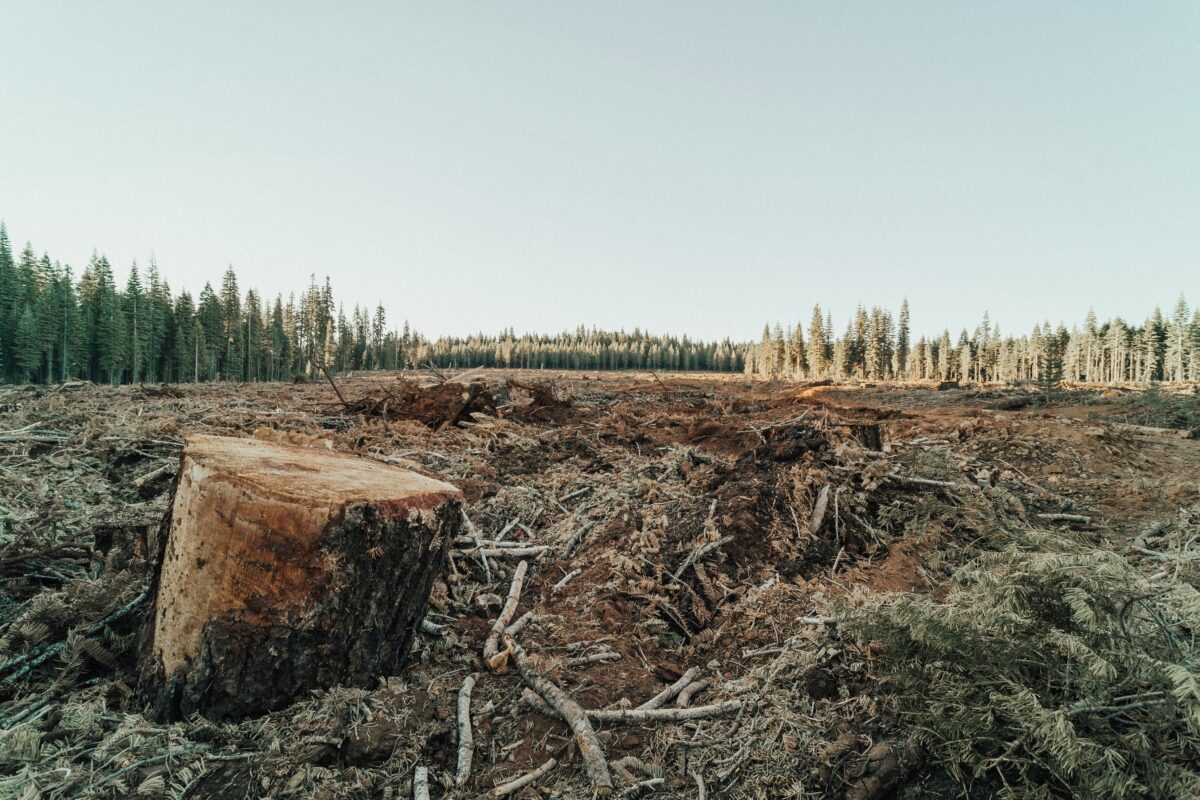Thousands of animal and plant species all over the world are forced out of their homes every day due to the destruction of their habitats. Many people are aware that urbanization, fires, mining, and wood extraction are leading causes of deforestation. However, above all, the leading cause of the deterioration of forests and nature reserves is agricultural expansion.
As rapid population growth causes demands for agricultural products to skyrocket, forests and ecosystems are deteriorated as they are converted into agricultural land. Large rainforests such as the Amazon, which stretches through Brazil, Bolivia, Colombia, Ecuador, French Guiana, Guyana, Peru, Suriname and Venezuela are especially susceptible. Approximately 12% of the 2.2 million square mile rainforest has been demolished for agricultural expansion, and among this land, 80% is used for cattle ranching. Not only does deforestation result in the loss of habitat for thousands of plants and animals, but the conversion of this land increases the risk of fires, adds pollutant carbon to the atmosphere, and clears lands in which popular crops such as coffee, avocado, tea, and chocolate grow, pushing them to extinction. Agricultural land covers almost 40% of Earth’s arable surface, which has been created by destroying rainforests and grasslands and all species who live within them.
As the largest rainforest in the world, the Amazon plays a significant role in regulating Earth’s climate by taking in a vast amount of carbon dioxide and producing roughly 6% of the world’s oxygen. This rainforest is also home to around 10% of Earth’s animal and plant species, some of which are used to derive drugs that treat diseases such as glaucoma, leukemia, heart disease, and malaria. The extinction of these species has led to major losses of the world’s biodiversity, some of which include plants that produce ingredients for various human medicines. Agricultural expansion for cattle ranching is a major contributor to extinction, as it causes an average of 137 plant and animal species in rainforests to be driven to extinction every day. The ceaseless deterioration of the Amazon and rainforests all around the world as a result of cattle ranching continue to not only harm wildlife, but also those who depend on the forests for necessary resources.
Rainforest land being depleted for cattle ranching is a direct result of the large demand for beef worldwide. Over the past 50 years, meat production has more than tripled, causing cattle grazing and beef production to be the leading cause of deforestation not only in the Amazon Rainforest itself, but in rainforests all over the world. Approximately 6.7 million acres of rainforests globally are demolished for beef production each year. Not only does deforestation result in the loss of vegetation and removal of wildlife, but deforestation due to agricultural expansion and cattle grazing is also a major cause of one of the world’s largest environmental issues: climate change.
From the moment trees are cut down to the production of meat from cattle, every step of the beef production process harms the environment. As ecosystems are cleared to create suitable land for cattle ranching, they are either burned or bulldozed, which disrupts waterways and cuts down the oxygen supplied to the atmosphere. The cattle later emit harmful greenhouse gases such as carbon dioxide and methane which cause human health effects such as elevated blood pressure, increased heart rate, and difficulty breathing.
Although cattle grazing can have possible conservation benefits in places like grasslands, some benefits––such as the improvement of soil quality––can only be achieved sustainably. Due to its global demand, the beef industry continues to be a large contributor to the global economy. Ranchers in the Northern Great Plains have begun to find more regenerative ways to graze their cattle by acknowledging that when managed appropriately, cattle grazing can maintain the health of grasslands by improving the soil quality. Unfortunately, these efforts still prove that there is ultimately no way of getting around the necessity for the habitat conversion and deforestation necessary for beef production.
Besides beef production, the second largest driver of agricultural expansion and deforestation is soybean production. The demand for soy is tightly tied with the demand for beef, as soy products are commonly used for livestock feed. Therefore, not only are forests deteriorated for the herding of livestock and the production of beef, but also for the maintenance and nourishment of cattle itself.
Other factors such as urbanization are valid when discussing deforestation. However, understanding that the leading cause of our environmental crisis is the production and consumption of beef is very important. Choosing to cut down on meat consumption, such as eating beef once a week rather than two or three times, can truly make a positive impact. Minimizing the amount of beef a household consumes decreases the demand for beef, causing further habitat conversion and deforestation for beef production to be unnecessary. As cattle grazing and beef production begin to diminish, soy production will rapidly follow, inducing a reduction in deforestation. This could eventually lead to decreases in the extinction of biodiversity, carbon dioxide emissions in the atmosphere, and the most harmful environmental challenges the world currently faces, such as increased wildfires due to climate change. Taking action to stop deforestation by cutting down on beef consumption can truly help save animals and plants on the verge of extinction –– even small efforts can help these species keep their homes.
Sources:
“Beef.” WWF, World Wildlife Fund, https://www.worldwildlife.org/industries/beef.
“Medicinal Secrets of the Amazon Rainforest.” Amazon Aid Foundation, 14 Aug. 2017, https://amazonaid.org/medicinal-secrets-amazon-rainforest/.
Meek, Taylor. “How Does Agriculture Cause Deforestation, and How Can We Prevent It?” Sentient Media, 21 June 2021, https://sentientmedia.org/how-does-agriculture-cause-deforestation/.
Silber, Susan, and William Velton. “Fact Sheet – Rainforest Animals.” Rainforest Action Network, 24 Nov. 2020, https://www.ran.org/fact_sheet_rainforest_animals/.
“Sustainable Ranching Initiative.” WWF, World Wildlife Fund, https://www.worldwildlife.org/projects/sustainable-ranching-initiative.
“What Are the Biggest Drivers of Tropical Deforestation?” WWF, World Wildlife Fund, https://www.worldwildlife.org/magazine/issues/summer-2018/articles/what-are-the-biggest-drivers-of-tropical-deforestation.

